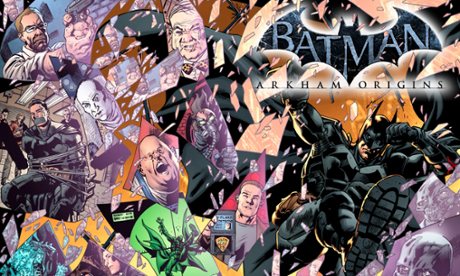
The technology that was used to create an online "motion book" of the classic DC comic Batman: Arkham Origins has been opened up to the public, allowing anyone to create and publish their own animated comic using a free, web-based tool.
The comic has been re-imagined as a "motion book", thanks to a new technology that allows comics to be created and animated within a web browser and viewed online or on mobile phones and tablets via an app.
The Batman motion comic was one of the most popular on the new Madefire platform, which creates animations that include sound as well as movement.
California-based startup Madefire has been experimenting with "motion books" that add “motion, sound and depth to the visual reading experience”. As more and more comics readers shift from printed books to phones and tablets, the race is on to reinvent the medium and create captivating content for the digital generation.
Motion books lie somewhere between the small hacks on the physical comic book experience such as Comixology’s Guided View, and more radical plans as proposed recently by the comics legend Alan Moore with his Electricomics idea.
“These are not motion comics like Watchmen, which is essentially a video,” clarifies Ben Wolstenholme, CEO and co-founder of Madefire. “We developed Motion Books with reading as the number one priority – where the reader remains in control, and there’s room for their imagination.
“All you need is a web browser and an internet connection to build and share your digital comics."
The new tool tries to simplify the creation of digital-first storytelling, encouraging artists to upload their artwork to the cloud, control the pace as the story unfolds, add fades, sounds and dissolve effects, and preview the book – all from the browser itself.
The results can then be published directly on Deviantart, the online social community for artists, as well as to the Madefire app for iOS and Windows. The company retains 30% revenues from any sales and the rest goes to the creator.
“We’ve found people taking two approaches: those who develop for print first and use the tool to lead the eye and create a jigsaw puzzle of their flat book. Others, who are either breaking down their art in layers or simply writing and drawing for the platform. In crude terms, it’s the difference between shooting a film on 3D or converting to 3D later,” explains Wolstenholme.
The real target of the tool is upcoming talent who find it difficult to get their work noticed. “Marvel and DC have a duopoly in comics and it’s very hard to get a new character or property developed,” says Wolstenholme, who trained as a designer and has his own series on Madefire called Mono.
DC and most other publishers are on board, except Marvel (which has an exclusive tie-up with Comixology), as are some big ticket writers and artists including Brian Bolland, Bill Sienkiewicz, Mike Carey and Dave Gibbons (who is also an investor in the company).
“Having seen motion comics like Watchmen, which seemed to be the worst of everything, I went into Motion Books cautiously,” admits Carey, the writer best known for the Lucifer series. But it didn’t take long for him to see the potential, resulting in his first outing on Madefire, Houses of the Holy.
“In traditional comics you have to be aware of the structure of a page around a key panel whereas here each panel is key and you’re aware of the structure only in the background,” says Carey. Use of sound and the iPad’s parallax effect providing a sense of depth also made a difference for him.
Digital comics sales are growing but the numbers are still tiny compared to print. Estimates for 2013 released last week show just $90m worth of digital comics were sold in north America, the biggest market for comics, compared to $780 million for print. So there’s a lot to gain from experimenting for companies like Madefire.
The venture-funded company has raised about $7m so far from people with ties to Apple, Macromedia and Wordpress and the 50-member team has an equal mix of engineering and creative talent.
Next steps include extending the presence to Android and signing on more high profile creators, but the company isn’t in a hurry to make money: “We know there’s an orientation towards digital publishing that’s inevitable but digital comics is still a relatively small market size. Fortunately we have very patient investors,” says Wolstenholme.
• Comixology removal of in-app purchases sparks user backlash

